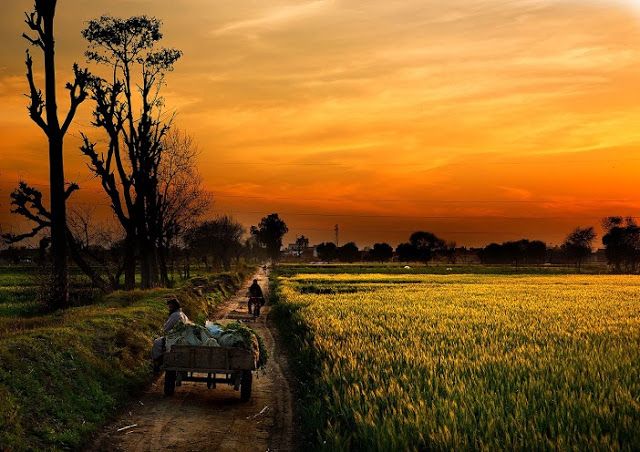
The state of Punjab is the land of five rivers: Beas, Satluj, Ravi, Chenab and Jhelum. “Punj means five” & “Aab means Water.” These rivers divided the state into Majha, Doaba and Malwa. Punjab is the oldest state to have cultivation on earth, with its distinguished language, culture, food, attire, script, folklore, people, etc. The Punjabi language originates in Sanskrit (not Hindi or Urdu as many young Indian Pakistanis believe), i.e. the family of Indo-European languages. It is always the land of great saints and fighters.
In the past, Punjab and its population have enjoyed a unique political and cultural. During the 16th and 17th centuries AD, the region was administered as a province of the Mogul Empire. As recently as the nineteenth century, much of the area was united under the Sikh nation of Ranjit Singh. Britain administered Punjab as a province of its Indian Empire. However, in the redrawing of political boundaries in 1947, Punjab was divided between India and Pakistan. Despite their common cultural heritage, Punjabis are now either Indians or Pakistanis by nationality.
TOURIST PLACES:-
Punjab is a holy place. The sacred Sikh sanctum, the Sri Harmandir Sahib (or Golden Temple), is in Amritsar. There are five Takhts(Temperory seat of religious authority)of Sikhism, three of which are in Punjab. These are–
- Sri Akal Takht Sahib
- Damdama Sahib and
- Sri Anandpur Sahib
Punjab is the prime state in terms of framework and is known for its sports and hose goods industry. Enjoy the rare hospitality and warmth of the people. Some of the major tourist attractions are –
- Golden Temple, Jallianwala Bagh, Wagah Border in Amritsar
- Sheesh mahal, Quila Mubarak, Moti Bagh Palace, Kali Devi Temple in Patiala
- Sikh Museum, Sukhna lake, Rock garden, Rose garden in Chandigarh
1. GOLDEN TEMPLE:
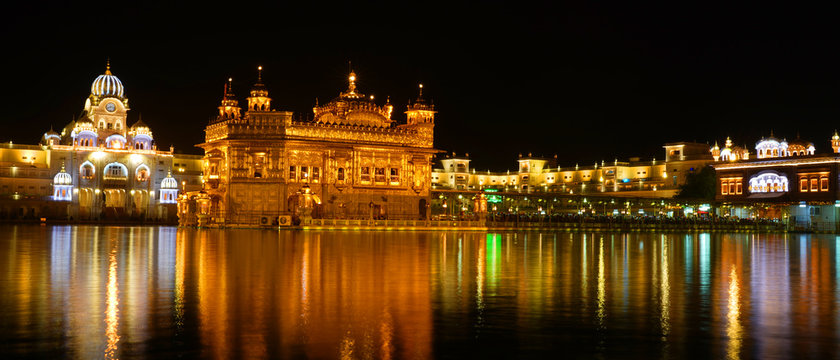
The Golden Temple is situated in the holy city, Amritsar. The Golden Temple is well-known for its full golden vault and is one of the holy worshipper spots for Sikhs. The Mandir is built of marble and is a duplex building, and Maharaja Ranjit Singh built the upper half building with approximately 400 kg of gold leaf. Several Another famous temple surrounding the Golden Temple is the Durgiana Temple.
The fourth Guru of Sikh, Guru Ram Das Ji, who had initially built a pool here, founded Amritsar. The Philosopher Valmiki write down the Epic Ramayana. It was believed that Rama and Sita spent their fourteen-year exile in Amritsar. The ‘Guru Ka Langar’ provides free food to around 50,000 people daily, increasing to 100,000 on special occasions. A visitor must cover their head before going to the temple site. The Akal Takht also stored the ancient weaponry used by the Sikh warriors, and guru Hargobind Singh Ji established it. The strong old Jubi Tree in the northwest part of the compounds is believed to have special powers, and it was planted 450 years ago by Baba Buddha Singh Ji.
2. JALLIAN WALA BAGH
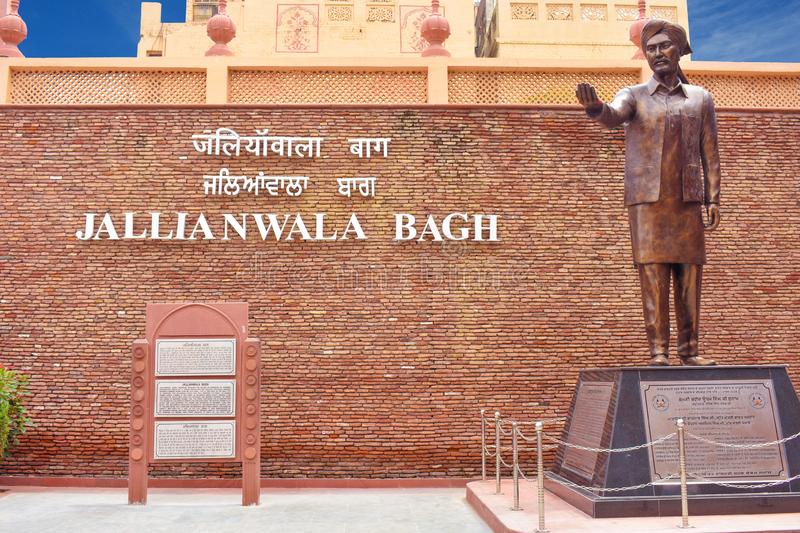
The memorial at this site salutes the 2000 Indians assassinated or injured, shot indiscriminately by the British under the order of General Michael Dyer on April 13, 1919. at the same time, they were engaged in a friendly public meeting. This incident is one of the big incidents occurs during India’s freedom struggle. The story of this engaging bloodbath is told in the Martyr’s Gallery. A section of wall with bullet marks is still visible and also taken care of memorial well in which some people dived to save their lives. After the Jallian Wala massacre, Mahatama Gandhi declared, “The impossible men of India shall rise and liberate their motherland”.
3. WAGAH BORDER
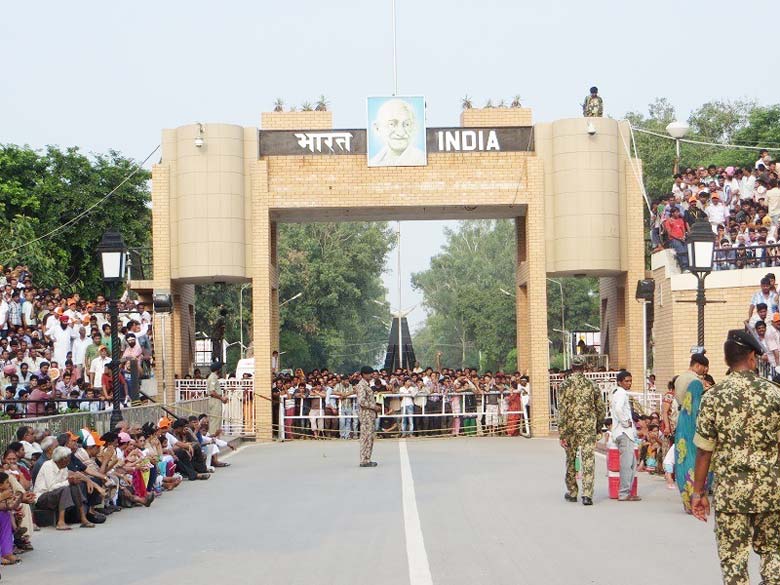
It is the international border between India and Pakistan. The formality and glory of the Beating Retreat and the Change of Guard within handshaking distance of the Indian and Pakistani forces make for a most charming spectacle. Wagah is an army frontier on the Indo-Pak border joining Amritsar and Lahore, and it is a complicated compound of premises, roads and railing on both sides of the states. The everyday summit is in the evening “Beating the Retreat” ceremony. Soldiers from both countries march in drills to get down their respective emblem(National Flag). As the sundown, nationalistic passion rises and lights are on, marking the end of the day with blasting applause.
CUISINES:
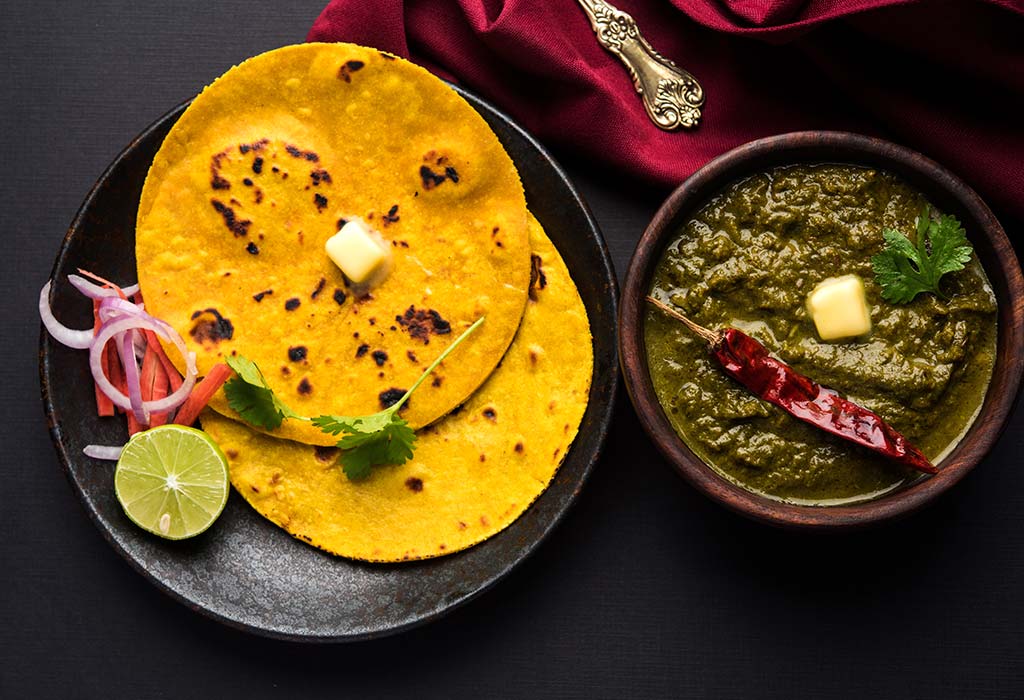
The cuisine of Punjab has a great variety of mouth-watering vegetarian and non-vegetarian dishes. In Punjab, homemade food is different from the restaurant’s cooking style. In restaurants, they use desi ghee, butter and cream to make food lip-smacking and finger-licking. On the other hand, people prefer using sunflower or other refined oil for cooking, with the idea of making low-fat food in houses. The main Traditional Punjabi food is – Sarson ka saag, Shahi paneer, Dal makhani, Rajma, Chole, Aloo, Chicken karahi, Chicken Tandori, Makki di Roti, Naan, Phulka, Puri, Papad, Lassi, Kheer, Rabri.
CULTURE & TRADITION:-

The culture of Punjab is the richest globally. Punjabi songs are full of refrain and energy. The dance styles of Punjab have more flavour with Bhangra, Giddha, kikli and Sammi. Dance forms. With the loud drumming of dholak, people dance with a passion to the tunes of the music. “Giddha” is a dance performed by women in Punjab. Bolis are expressively sung and twirled by women. Punjab love to dance and enjoy themselves. Folk music is the spirit of Punjabi culture. It comprises simple musical instruments like the dholak and dhol drum—Punjabi songs at the wedding range from emotional interludes to very peppy beats. A sense of mood is essential to enjoy the wedding songs.
The traditional dress is Kurta-pyjama with a turban for men, and women prefer Patiala suits as part of their traditional attire. A splash of colours in the pagdi-turban and phulkari dupattas comes out during the Baisakhi festival. The traditional dress of the Punjabis, comprising the salwar-kameez for women and lehenga-kurta with a waistcoat, has many colours and styling. Turban styles can be explored.
ART & CULTURE:-
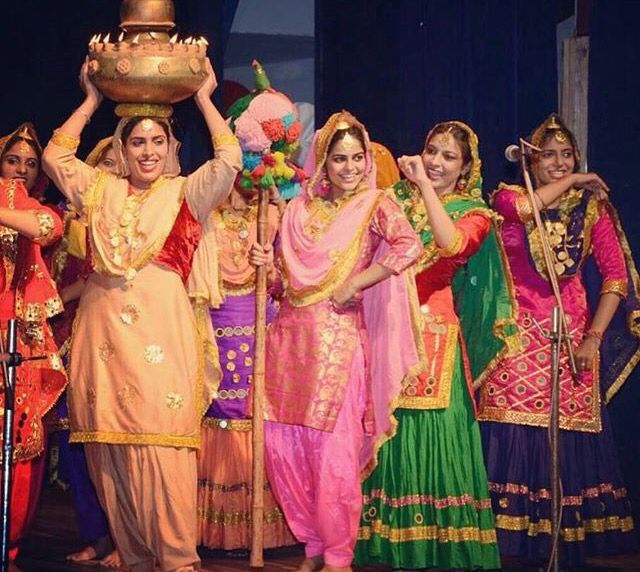
Punjabis are renowned for their extreme attention to arts and crafts. Many remarks have fancy designs and craftwork. Most of the women used to weave woollen clothing for their family members. “Phulkari” is appreciated worldwide for its twisted job. Shawls in silk are hand-woven carefully, using traditional patterns. Other famous crafts of the region are built with lacquer work and wooden work: calico painting, paper mache and many more. Artisans beautifully craft wooden furniture with exquisite craftsmanship.

